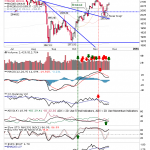The USDA’s annual US acreage & quarterly stocks lived up to its traditional reputation for providing some unexpected farmer survey data again this year. Today’s planting data revealed a bigger recovery in the US corn seeding from March’s big drop while soybeans plantings were lower than the USDA’s 2024 planting intention data. This year’s June 1 quarterly stocks were generally as expected, except for a modestly higher corn stocks than the trade’s average estimate.After last spring’s dramatic 4.55 million lower acres on the farmer’s US 8 major seedings, the USDA’s latest planting survey showed a 1.76 million overall rise in the major planting area. The producers increased their corn plantings by 1.44 million, upped their cotton seedings by 1 million, shaved 410,00 soybean acres, reduced wheat’s area by 258,000 acres and minor changes in their oats, barley, sorghum, and rice seedings occurred this month vs March.In corn, the rebound in seedings occurred in the Western Corn Belt with KS (+600,000), Iowa (+300,000), NE (+250,000), MN (+200,000) and SD (+100,000) leading the rise while ECB was steagy to slightly lower in plantings vs March. Higher cattle and hog numbers are likely the reason for these higher plantings. Adding to the negativism was today’s June 1 stocks that were 120 million higher than trade average estimate. Seasonally, they were on target for the USDA’s spring quarterly feed demand pace, but they didn’t match the trade optimism about higher corn feed demand because of higher animal numbers. Also, today’s corn stocks don’t suggest that the USDA’s final 2023 crop size was overestimated or has any other issues. Weather will remain important for the US final crop outputs, but the USDA isn’t likely to adjust their current initial yield ideas for their major July crop outlooks. Corn’s higher acreage level of 1.44 million will push their 2024 corn output to 15.1 billion bu, up 240 million from last month. With limited demand changes these supplies will likely advance corn’s 2024/25 ending stocks by similar amount to 2.34 billion bu. These higher possible supplies were behind today’s July price pressure to slightly below $4.00/bu. In soybeans, producers reduced their bean plantings by 410,000 acres. The changes from March are mixed with Iowa (-300,000), MO (-400,000) & Dakotas (-200,000) acres are down while KS (+240,000) and IL (+200,000) have planted more acres than March. Reduced double crop seedings in MO and the SE was likely a factor in soybeans lower overall plantings. The USDA’s June 1 stocks of 970 million bu seems to follow this past spring’s US crush and export disappearance. Similar to corn, no adjustment seems like in the US 2023 crop size later this crop season. Today’s smaller 2024 seedings will likely reduced soybeans output by 20 million bu to 4.43 billion with no change in USDA’s yield level. With no changes in beans 2024/25 demand levels, this lower crop output will dip soybeans new-crop stocks from 455 to 435 million bu. With this slight decline in stocks and the remaining 2 months of soybeans growing season, this oilseed remained generally within its recent price range by the close. Overall, wheat’s 2024 plantings were reduced by 260,000 acres on today’s acreage report both spring (65,000) & winter (330,000) seedings were lowered while durum (+137,000) plantings were raised. Wheat’s final 2024 stocks rose 18 million bu 702 mill from June’s previous level with reduced old-crop feeding the likely factor. Despite smaller 2024 plantings, the USDA’s raised its harvested area by 790,000 acres to 39.79 million on today’s acreage report. Even with an unchanged US yield level of 49.4 bu from last month, the US total wheat crop could rise by 41 million bu to 1.1916 billion. With wheat’s beginning stocks also up 14 million to 702 million, wheat’s overall ending stocks will likely be up 55 million bushels to 813 million from June’s 758 million level. Nearby prices held their recent lows which is encouraging for possible seasonal low with the US wheat harvest likely to be pushing past Kansas into Nebraska this weekend. Some recent Kansas country yield haven’t been as strong, but more overseas demand will be needed for big post-harvest US price increase. Overall, US CBOT prices have press into long-term support levels in corn, soybeans and wheat. The upcoming July corn pollination and August seed filling conditions for corn and soybeans remain big factor on the size of the two major US 2024 crops. Be prepared to finalize your 2023/24 remaining crop supplies on weather scares in the next few weeks.More By This Author:US/World S&Ds & 2024 US W, Wheat ProductionAmerican Crop Updates USDA April Crop Supply







Leave A Comment